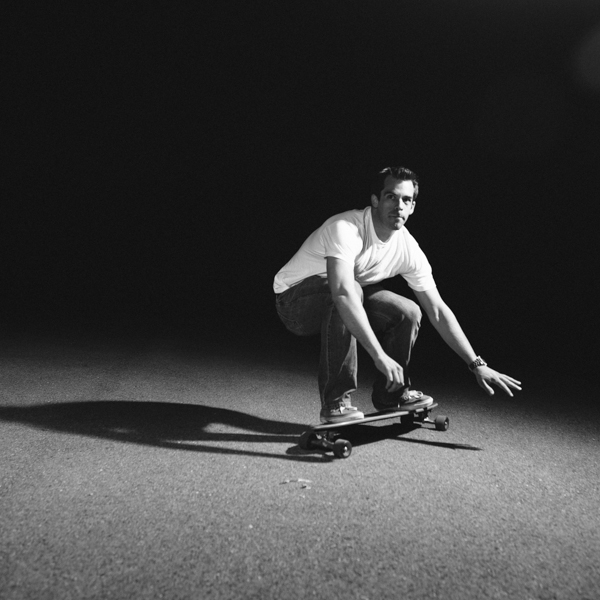Many photographers view one of these photography terms with a positive connotation and the other with a negative connotation.
The natural light proponents like the simple and airy qualities of outdoor and window light and are oftentimes intimidated by the thought of using complicated lighting setups and tons of gear to achieve a certain look.
The studio light proponents like the tight control they have over shaping their light from clearly defined sources and view natural light photography as overly basic and for the less skilled photographers.
The truth is, there is a time and place for both and both can provide superb light for images. I would recommend mastering both!

This kind of photo needs studio strobes to pull off.
Studio light: the pros
Starting with the awesome things about using studio lights:
1. You are not limited by the time of day. As long as you have power, your lights are running at a constant output and only change direction when you make them.
2. There are a ton of options for modifiers to change the look of your light. Too hard? Add a diffuser. Too spread? Add a grid. Not wrapping around your subject? Change the shape of your softbox. With every change in the size, shape or material of your diffusers, you get a whole new look.
3. They lend credibility in front of your subjects. People are almost always impressed by a fancy lighting setup and assume you know what you are doing with your gear.
4. You have complete control over how intense your light is, the direction it is coming from, and the shape of the light.
Studio light – the cons
The things that are not so awesome about studio lights:
1. They can be very expensive. You will always want more lights, more powerful lights and more modifiers.
2. You need a power source. If you are indoors it is typically easy to find electricity. Depending on how many lights you have and how many outlets are in your location, you may need a power strip too. If you are outdoors you will need battery packs or a generator to keep your gear going. This can be expensive too.
3. They can break. I’ve had lights fall and break on set. I’ve had lights just stop working for no reason too. It’s hard to rely on so many electronic components that have the chance of failure. And it’s expensive to have backup lights.
4. It’s not a necessity, but it’s really helpful to have wireless triggers for your studio strobes. Those cost money too.
5. They take a while to set up and get dialed in just right
Need tips on lighting and other equipment for you studio? Check out my post on “Portraiture Equipment.”

Natural light can have a bright and airy look.
Natural light – the pros
1. It’s cheap.
2. If you need really hard light you can shoot on a sunny day. If you need really soft light you can shoot on a cloudy day.
3. Natural light tends to bounce around and seep through openings in doors and windows. It can make for some very soft light.
4. It can give you a bright and airy quality to your photographs that is difficult to achieve with studio lights.
5. It’s quick work to measure your light and position your subject with a nearly constant light source.
Natural light – the cons
1. You have to go find it. And sometimes the direction of your light doesn’t mesh well with the background you want to use.
2. It typically doesn’t last very long. You have a few hours in the morning and a few hours in the afternoon that are typically pretty good for soft light. If you want a low hard light you only have less than an hour on either side of the day.
3. Weather is a factor.
4. You may need to invest in fast lenses to take advantage of natural light that isn’t super bright. This can be expensive.
Mastering studio lighting can be tricky. Learn all about studio equipment and setup, as well as professional lighting design techniques, in the online photography class Studio Portrait Lighting with Kirk Tuck. He’ll teach you how to direct your subject and maximize your softbox and umblella to get the most out of a single light.
You might also enjoy our post on studio lighting kits for your home studio and our tips for shooting in natural light.

Share tips, start a discussion or ask one of our experts or other students a question.
No Responses to “Studio vs. Natural Light: Which Is Better?”